Jennifer Scoullar's Blog, page 17
December 12, 2013
Going Public With Your Writing Habit, by Phillipa Fioretti
 Reblogged from Writing Novels in Australia:
Reblogged from Writing Novels in Australia:
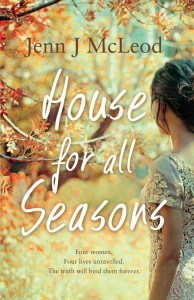


It’s not easy to start writing and be taken seriously. Many, many people write – seven percent of Australians according to one source – and so few are traditionally published. It’s the cruel fact that underlies the writing life. Those who know the industry understand this. They also know that what is published is largely dictated by the market and that many incredibly talented writers are passed over and never get their chance.
I'm time poor right now, hurrying to meet an editing deadline for next year's release, Billabong Bend. So instead of my usual post, here is a marvellous piece on writing by Australian author Phillipa Fioretti. In 2008 Phillipa was selected for participation in the Hachette Australia/Queensland Writers Centre Manuscript Development Program. Her first book, The Book of Love, Hachette Australia, 2010, has also been published in Germany, Romania, Norway, Poland, Serbia and Montenegro and the sequel, The Fragment of Dreams was published in May 2011. Her third book, For One Night Only, will be published by Pan MacMillan’s digital press, Momentum, in January 2014
December 5, 2013
Subplots
 I’m planning my new novel (as much as a pantster can) and have been thinking a lot about subplots. I love dreaming them up - B stories, those side stories that add dimension and complexity to the main narrative. Take a suspense thriller for example. Our heroine Susan, is a teacher. An outbreak of bizarre behaviour among her high school students leads her to believe they are being mysteriously hypnotised. Solving the puzzle is the main plot. But perhaps Susan also has trouble at home, a rocky marriage she’s trying to save. We’ll see a different side of her in scenes where she fighting for her relationship, than we will when she’s being a super sleuth. Subplots allow writers to deepen characterisation.
I’m planning my new novel (as much as a pantster can) and have been thinking a lot about subplots. I love dreaming them up - B stories, those side stories that add dimension and complexity to the main narrative. Take a suspense thriller for example. Our heroine Susan, is a teacher. An outbreak of bizarre behaviour among her high school students leads her to believe they are being mysteriously hypnotised. Solving the puzzle is the main plot. But perhaps Susan also has trouble at home, a rocky marriage she’s trying to save. We’ll see a different side of her in scenes where she fighting for her relationship, than we will when she’s being a super sleuth. Subplots allow writers to deepen characterisation.
 Used well, subplots also help emphasise theme. The theme may be finding one’s authentic self. In the main story, Susan’s exploration of hypnosis and the human psyche makes her question her mundane, unadventurous life. Is it fulfilling or has she settled? In the subplot, Susan holds on to her husband, by pretending to be someone she’s not. At some point she realises she needs to let him go. The subplot illustrates theme from a different angle.
Used well, subplots also help emphasise theme. The theme may be finding one’s authentic self. In the main story, Susan’s exploration of hypnosis and the human psyche makes her question her mundane, unadventurous life. Is it fulfilling or has she settled? In the subplot, Susan holds on to her husband, by pretending to be someone she’s not. At some point she realises she needs to let him go. The subplot illustrates theme from a different angle.
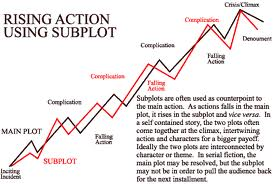 Subplots give readers variety - a rest from the main plot, especially if you’ve hit a slow patch. You can switch over to an interesting subplot and let the main story play out in the background for a bit. They can provide light relief, an opportunity for humour to be injected into a serious story. And they can be a lot of fun to write. Remember though, they should be tackled in the same way as your main plot with their own narrative arc. And they shouldn’t overwhelm the story. If a subplot takes over the main one, it’s trying to tell you something. Maybe that’s where the action really is?
Subplots give readers variety - a rest from the main plot, especially if you’ve hit a slow patch. You can switch over to an interesting subplot and let the main story play out in the background for a bit. They can provide light relief, an opportunity for humour to be injected into a serious story. And they can be a lot of fun to write. Remember though, they should be tackled in the same way as your main plot with their own narrative arc. And they shouldn’t overwhelm the story. If a subplot takes over the main one, it’s trying to tell you something. Maybe that’s where the action really is?

November 28, 2013
Knowing When You’re Done …
 I’m in the middle of final edits for next year’s release, Billabong Bend. One of the most difficult things for writers, published or unpublished, is knowing when the book is done. It’s easier, of course, with a book under contract. You have a deadline, and an editor who has her own wise opinions. But it can still be a fraught question, and not just for writers. I’ve heard of painters who see their work on exhibition, and want to whip out the paint brush then and there, and of composers who want to change chords in published pieces. Countless changes will spring to mind on the final read. Here are the main things I think about.
I’m in the middle of final edits for next year’s release, Billabong Bend. One of the most difficult things for writers, published or unpublished, is knowing when the book is done. It’s easier, of course, with a book under contract. You have a deadline, and an editor who has her own wise opinions. But it can still be a fraught question, and not just for writers. I’ve heard of painters who see their work on exhibition, and want to whip out the paint brush then and there, and of composers who want to change chords in published pieces. Countless changes will spring to mind on the final read. Here are the main things I think about.
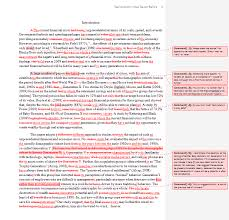 1. Check the writing - Spelling? Grammar? Overuse of adverbs or filler phrases? Tautologies or unnecessary dialogue tags? In this latest draft of Billabong Bend, characters were shaking and nodding their heads all the time, and driving my editor mad! These stage directions can aid a first draft when the writer is telling themselves the story. Like um or ah when speaking, they allow thinking time. But they do not belong in a final draft. Do a search for words you might have overused. Remove them.
1. Check the writing - Spelling? Grammar? Overuse of adverbs or filler phrases? Tautologies or unnecessary dialogue tags? In this latest draft of Billabong Bend, characters were shaking and nodding their heads all the time, and driving my editor mad! These stage directions can aid a first draft when the writer is telling themselves the story. Like um or ah when speaking, they allow thinking time. But they do not belong in a final draft. Do a search for words you might have overused. Remove them.
2. Dialogue - By now you should know what your characters sound like. Read dialogue aloud, assessing vocabulary, sentence length, use of contractions, etc. Make sure the word choices you’ve made add up to a consistent and unique voice. You don’t want your characters all sounding the same.
 3 Follow each thread to its logical conclusion - It might be the progress of your protagonist from weak and unsure to strong and certain, or the relationship arc between two characters in a love story. It could be the trail of clues in a mystery. Have you added or deleted scenes during rewrites, or changed their order? If a character is introduced in chapter 3, and not again till chapter 30, do they really need to be there? If they do, they must be mentioned a few times so the reader won’t forget about them. Have you played with the timeline? Does the story still make sense?
3 Follow each thread to its logical conclusion - It might be the progress of your protagonist from weak and unsure to strong and certain, or the relationship arc between two characters in a love story. It could be the trail of clues in a mystery. Have you added or deleted scenes during rewrites, or changed their order? If a character is introduced in chapter 3, and not again till chapter 30, do they really need to be there? If they do, they must be mentioned a few times so the reader won’t forget about them. Have you played with the timeline? Does the story still make sense?
4. Don’t edit your writing to death - I’ve seen some unfortunate examples of writers revising the heart out of their work. Retain the vigour and imaginative breadth of your original vision. Nothing’s ever perfect. I’ll finish with a piece by American novelist Harry Crews.
“Graham Greene [said] “The writer is doomed to live in an atmosphere of perpetual failure.” There it is … every writer writes with the knowledge that nothing he writes is as good as it could be. Paul Valery said, “A poem’s never finished, only abandoned.” The same thing with a novel. It’s never finished, only abandoned. I’ve had any number of novels where I’ve just at some point said to myself, well, unless you’re going to make a career out of this book – spend the rest of your goddamn life chewing on it – you might as well just package it up and send it to New York.”

November 22, 2013
Phillip Island
 Well, my next round of edits for Billabong Bend have arrived, and with a short deadline, it’s time to get stuck in. Pilyara’s peaceful mountains are very conducive to writing. However for a change, I sometimes spend time down at the coast – at my brother’s lovely, large house at Phillip Island, just one street from the ocean.
Well, my next round of edits for Billabong Bend have arrived, and with a short deadline, it’s time to get stuck in. Pilyara’s peaceful mountains are very conducive to writing. However for a change, I sometimes spend time down at the coast – at my brother’s lovely, large house at Phillip Island, just one street from the ocean.
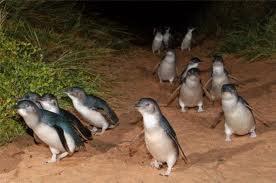 My brother Rod is a keen photographer and bird watcher. He lives in the right place, because Phillip Island and the Bass Coast are home to more than two hundred bird species. Local wetlands support a variety of migratory birds including Bar-tailed godwits, Curlew sandpipers, Whimbrels and Red-necked stints. The southern and western coasts of the island lie within the Phillip Island Important Bird Area, so proclaimed by BirdLife International because of its importance in supporting significant populations of Little Penguins (aka Fairy Penguins), Short-tailed Shearwaters (aka Muttonbirds) and Pacific Gulls.
My brother Rod is a keen photographer and bird watcher. He lives in the right place, because Phillip Island and the Bass Coast are home to more than two hundred bird species. Local wetlands support a variety of migratory birds including Bar-tailed godwits, Curlew sandpipers, Whimbrels and Red-necked stints. The southern and western coasts of the island lie within the Phillip Island Important Bird Area, so proclaimed by BirdLife International because of its importance in supporting significant populations of Little Penguins (aka Fairy Penguins), Short-tailed Shearwaters (aka Muttonbirds) and Pacific Gulls.
 The island also has a Koala Conservation Centre, and hosts the largest colony of fur seals in Australia (up to 16,000) But you don’t have to take a boat to Seal Rocks to see them. Here’s a photo of one cruising round the local jetty, just metres from my brother’s house. How lucky am I to have the best of both worlds on my doorstep - Pilyara’s tall-timbered mountains, and Phillip Island not much more than an hour away. What a beautiful country to live in …
The island also has a Koala Conservation Centre, and hosts the largest colony of fur seals in Australia (up to 16,000) But you don’t have to take a boat to Seal Rocks to see them. Here’s a photo of one cruising round the local jetty, just metres from my brother’s house. How lucky am I to have the best of both worlds on my doorstep - Pilyara’s tall-timbered mountains, and Phillip Island not much more than an hour away. What a beautiful country to live in …

November 14, 2013
It’s Time To Start A New Book When …
I’m between books. The second round of Billabong Bend edits aren’t back yet, and I’m on a self-imposed writing break. It’s necessary for writers to take a holiday sometimes. To read, to play, to fill up the creative well – and to do all those chores that get neglected when a manuscript is in full swing. I’m not a naturally tidy person, not by a long shot, but right now the house and garden are neat. The feed and tack rooms are spick and span. I’m doing that nesting thing pregnant women do before giving birth – getting the environment in order so I can devote myself to my new baby/story. So I’ve made a list – It’s time to start writing a new story when:
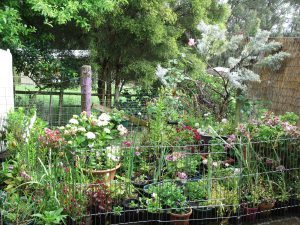 1. You go to water the pots and wind up weeding, repotting and fertilising every one.
1. You go to water the pots and wind up weeding, repotting and fertilising every one.
2. You go to the wardrobe to get a shirt and wind up organising all your clothes by colour.
3. Your usually messy office is spotless.
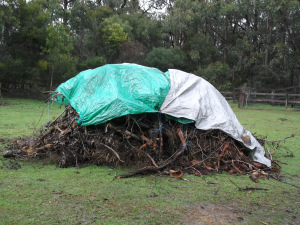 4. You start raking up sticks around the house and end up with a massive bonfire pile.
4. You start raking up sticks around the house and end up with a massive bonfire pile.
5. You have defragged your computer, scanned for errors, and backed up files.
 6. Shoes that are usually piled higgledy-piggledy in a box are placed neatly on shelves.
6. Shoes that are usually piled higgledy-piggledy in a box are placed neatly on shelves.
7. You have oiled the saddles and bridles.
8. You have discovered the random article button on WikiHow
 9. You look for a coloured pencil and wind up sorting and sharpening them all.
9. You look for a coloured pencil and wind up sorting and sharpening them all.
10. You start checking out different social media networks like Pinterest, Vimeo, Tumbler, StumbleUpon, FourSquare, Reddit, Wattpad, Flickr, DeviantArt, Delicious, and BookLikes. You begin to create any accounts you don’t yet have.
 11. The dogs are bathed and groomed.
11. The dogs are bathed and groomed.
12. The new story is calling out to be written.
Okay, I’ve ticked them all off my list. New book, here I come …

November 7, 2013
Just One Percent …
 The Melbourne Cup is run, the spring racing carnival in full swing, but as a massive horse lover, I can’t watch a race without seeing the misery behind it. The biggest animal welfare issue facing the Australian racing industry is wastage – a euphemism for the slaughter of twenty thousand thoroughbreds each year.
The Melbourne Cup is run, the spring racing carnival in full swing, but as a massive horse lover, I can’t watch a race without seeing the misery behind it. The biggest animal welfare issue facing the Australian racing industry is wastage – a euphemism for the slaughter of twenty thousand thoroughbreds each year.

Deposer
Eighty percent of horses get no life after racing. Take Deposer, for example. This magnificent horse raced at Royal Ascot, went to Hong Kong, then came to Australia and won more than $1.1 million for his owners – before being dumped in the Echuca meat pens. He was alone, forgotten and left for dead, when filmed by the Coalition for the Protection of Racehorses last year. Deposer was due to join thousands of terrified, often starving and terribly injured horses, in a desolate dogger’s yard. They are taken one by one into a killing box, and shot in front of each other for pet food, crab-pot bait and export meat. More than ten thousand thoroughbreds slaughtered each year are healthy young animals under seven years old. Call me a party-pooper, but that just stinks!
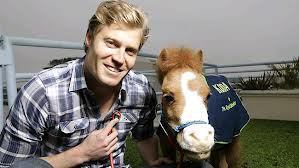 Celebrity vet Dr Chris Brown has got behind a proposal for the Australian racing industry to use a tiny 1% of all betting turnover to establish a retirement plan for horses. Along with this, the proposal calls for some other preventative measures (such as a reduction in breeding) to stem the issue of wastage, and in the long-term, end the slaughter of thoroughbreds. A 1% betting levy would result in $143 million annually being given back to racehorses, thus sharing the riches from the ‘Sport of Kings.’
Celebrity vet Dr Chris Brown has got behind a proposal for the Australian racing industry to use a tiny 1% of all betting turnover to establish a retirement plan for horses. Along with this, the proposal calls for some other preventative measures (such as a reduction in breeding) to stem the issue of wastage, and in the long-term, end the slaughter of thoroughbreds. A 1% betting levy would result in $143 million annually being given back to racehorses, thus sharing the riches from the ‘Sport of Kings.’
http://www.horseracingkills.com/features/1-percent-to-stop-the-slaughter/ http://tenplay.com.au/channel-ten/the-project/extra/season-5/just-1-percent http://www.smh.com.au/environment/animals/they-shoot-horses-dont-they-20130923-2u8nh.html
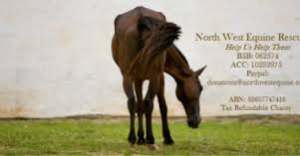 In the meantime, North West Equine Rescue INC have vowed to take off the track racehorses when their career is over (sometimes before it even starts).
In the meantime, North West Equine Rescue INC have vowed to take off the track racehorses when their career is over (sometimes before it even starts).
NWER INC is a Not-for-Profit registered charity with three bases in Moree, Armidale and Tamworth. Since registering in 2012 NWER has successfully rescued and rehomed 397 horses. NWER is funded by the generosity of the public, meaning they receive NO government funding. Volunteers have twenty-four horses in care at any given time. Their mission is to rescue as many sick, injured and slaughter-bound animals as possible, set their lives on a different path and give them the second chance they deserve! NWER have set out to raise $5,000 to rescue seven thoroughbreds facing slaughter, re-educate and rehome them. They are still a long way off target. You can donate as little as a dollar. Help put a doomed racehorse in the arms of these angels. It only seems fair, don’t you think?
www.northwestequine.org.au
[email protected]
www.facebook.com/North.West.Equine.Rescue

Just One Percent
 The Melbourne Cup is run, the spring racing carnival in full swing, but as a massive horse lover, I can’t watch a horse race without seeing the misery behind it. The biggest animal welfare issue facing the Australian racing industry is wastage – a euphemism for the slaughter of twenty thousand thoroughbreds each year.
The Melbourne Cup is run, the spring racing carnival in full swing, but as a massive horse lover, I can’t watch a horse race without seeing the misery behind it. The biggest animal welfare issue facing the Australian racing industry is wastage – a euphemism for the slaughter of twenty thousand thoroughbreds each year.

Deposer
Eighty percent of horses get no life after racing. Take Deposer, for example. This magnificent horse raced at Royal Ascot, went to Hong Kong, then came to Australia and won more than $1.1 million for his owners – before being dumped in the Echuca meat pens. He was alone, forgotten and left for dead, when filmed by the Coalition for the Protection of Racehorses last year. Deposer was due to join thousands of terrified, often starving and terribly injured horses, in a desolate dogger’s yard. They are taken one by one into a killing box, and shot in front of each other for pet food, crab-pot bait and export meat. More than ten thousand thoroughbreds slaughtered each year are healthy animals under seven years old. Call me a party-pooper, but that just stinks!
 Celebrity vet Dr Chris Brown has got behind a proposal for the Australian racing industry to use a tiny 1% of all betting turnover to establish a retirement plan for horses. Along with this, the proposal calls for some other preventative measures (such as a reduction in breeding) to stem the issue of wastage, and in the long-term, end the slaughter of thoroughbreds. A 1% betting levy would result in $143 million annually being given back to racehorses, thus sharing the riches from the ‘Sport of Kings.’
Celebrity vet Dr Chris Brown has got behind a proposal for the Australian racing industry to use a tiny 1% of all betting turnover to establish a retirement plan for horses. Along with this, the proposal calls for some other preventative measures (such as a reduction in breeding) to stem the issue of wastage, and in the long-term, end the slaughter of thoroughbreds. A 1% betting levy would result in $143 million annually being given back to racehorses, thus sharing the riches from the ‘Sport of Kings.’
http://www.horseracingkills.com/features/1-percent-to-stop-the-slaughter/ http://tenplay.com.au/channel-ten/the-project/extra/season-5/just-1-percent http://www.smh.com.au/environment/animals/they-shoot-horses-dont-they-20130923-2u8nh.html
 In the meantime, North West Equine Rescue INC have vowed to take off the track racehorses when their career is over (sometimes before it even starts).
In the meantime, North West Equine Rescue INC have vowed to take off the track racehorses when their career is over (sometimes before it even starts).
NWER INC is a Not-for-Profit registered charity with three bases in Moree, Armidale and Tamworth. Since registering in 2012 NWER has successfully rescued and rehomed 397 horses. NWER is funded by the generosity of the public, meaning they receive NO government funding. Volunteers have twenty-four horses in care at any given time. Their mission is to rescue as many sick, injured and slaughter-bound animals as possible, set their lives on a different path and give them the second chance they deserve! NWER have set out to raise $5,000 to rescue seven thoroughbreds facing slaughter, re-educate and rehome them. They are still a long way off target. You can donate as little as a dollar. Help put a doomed racehorse in the arms of these angels. It only seems fair, don’t you think?
www.northwestequine.org.au
[email protected]
www.facebook.com/North.West.Equine.Rescue

October 23, 2013
Don’t Be A Writer …
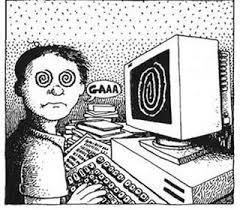 I’m deep into structural edits for my new novel, Billabong Bend, due out next year. The deadline is next week. I’m too busy to blog (already missed last week’s post) so my brother Rod Scoullar has sprung to my rescue. He writes terrific young adult fantasy as a hobby, and has written a guest post. ‘It can be about anything,’ I said. This is what he came up with … (Love ya Rod x)
I’m deep into structural edits for my new novel, Billabong Bend, due out next year. The deadline is next week. I’m too busy to blog (already missed last week’s post) so my brother Rod Scoullar has sprung to my rescue. He writes terrific young adult fantasy as a hobby, and has written a guest post. ‘It can be about anything,’ I said. This is what he came up with … (Love ya Rod x)
“Don’t be a writer.
A writer’s life is hard. Oh it’s not hard to write – putting words on paper is easy. It isn’t even that hard to put well written words on paper, words in well structured sentences, words that flow, words that evoke mood or place or situation. I can do that. You must do that if you are to be a writer.
Words are not enough though, even well written words. The reader will weary of the sweetest prose if the plot is inadequate. Poor characterisation will undermine any story regardless of the beauty of the writing. Those are areas in which I fall down. I’m not destined to be a writer; yet it isn’t for that reason.
I see how hard Jenny works. I see the notebooks, constantly added to, dozens of them, full of words and ideas that might be useful, someday. I see the effort that goes into the research. I see the discipline that requires so many words must be written before day’s end. I see the redrafting, the effort to fashion a scene just so. I see the frustration when things don’t come together.
Then, when the manuscript is complete, as best it can be given the timeframe – professional writers have to work to deadlines – and sent to the publisher, back come the edits. “Character X needs greater development early in the manuscript; the relationship between Y and Z should build more slowly; the resolution of the conflict in chapter seven seems contrived, etc.” Those aren’t comments relating to Jennifer’s current manuscript in case you’re wondering. Oh, and don’t self-publish without a professional edit. Professional editors know what they’re about. Ignore them and their advice at your peril.
I’m not prepared to put in the effort required to be published. Writing something is easy. Writing something worthwhile may be possible, but writing and rewriting and rewriting again is too much for me. I don’t want to be a writer, not desperately. It might be fun to try but, well, for me it’s all too much. If you want to be a writer, want it because you can’t imagine yourself as anything else, then go for it; but understand – a writer’s life is hard.”


October 10, 2013
Echidna Dreaming
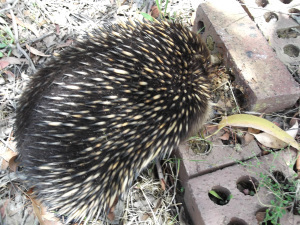 Millie, a friendly echidna, has recently arrived at Pilyara. (I really don’t know what gender, but with such a pretty face, I’m guessing a girl!) She loves feasting on the meat ants that live in our old brick pile. So in honour of our new resident, here are some fascinating echidna facts.
Millie, a friendly echidna, has recently arrived at Pilyara. (I really don’t know what gender, but with such a pretty face, I’m guessing a girl!) She loves feasting on the meat ants that live in our old brick pile. So in honour of our new resident, here are some fascinating echidna facts.
1. Echidnas are the most widely distributed mammal in Australia and are listed as common. (Yes – I know they’re monotremes too.) But because they live for forty-five years or more, we may have an ageing population. Nobody knows the current survival rate for young. In a Kangaroo Island study, more than a quarter of all puggles (the cute name for baby echidnas) were killed in their burrows by cats each year.
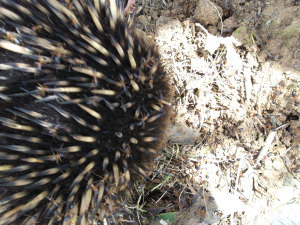 2. The prefrontal cortex of an echidna’s brain is larger compared to the rest of its body than any other mammal, including man! Usually the greater the volume of this part of the brain, the more intelligent the animal is. So, Millie’s a smart cookie!
2. The prefrontal cortex of an echidna’s brain is larger compared to the rest of its body than any other mammal, including man! Usually the greater the volume of this part of the brain, the more intelligent the animal is. So, Millie’s a smart cookie!
3. It was once thought that echidnas were the only mammals that didn’t dream, because they didn’t seem to experience REM sleep. It’s now been discovered that echidnas do experience REM sleep, so long as they’re at the right temperature. At 25°C they experience REM sleep, but at 28°C or 15°C it decreased or disappeared. Wonder what they dream about?
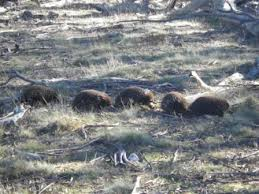
Echidna Love Train
4. Echidnas breed in winter, so if Millie sticks around until then, I might be lucky enough to see some fascinating courtship behaviour – an echidna love train. These processions are led by the female, with up to ten lovelorn males trailing behind. It can take six weeks before Miss Popularity chooses a mate from the strongest and most determined suitors.

October 2, 2013
Proofreading Submissions
 Grammar or spelling mistakes in submissions to agents or publishers are an obvious no-no. In this very tough publishing climate, it’s foolish to give people any extra reason to toss your work onto the reject pile. That said, proof-reading fiction is different from working on non-fiction. An author’s unique voice may involve the use of unusual grammar and punctuation, especially in dialogue. Yes, you can occasionally start a sentence with and or but. You can use colloquialisms. You can use incomplete sentences. But you need to be sure of the rules before you can sensibly decide to break them.
Grammar or spelling mistakes in submissions to agents or publishers are an obvious no-no. In this very tough publishing climate, it’s foolish to give people any extra reason to toss your work onto the reject pile. That said, proof-reading fiction is different from working on non-fiction. An author’s unique voice may involve the use of unusual grammar and punctuation, especially in dialogue. Yes, you can occasionally start a sentence with and or but. You can use colloquialisms. You can use incomplete sentences. But you need to be sure of the rules before you can sensibly decide to break them.
 It’s often more effective to wait a while between writing and proof-reading, to get some space between you and the words. Some people prefer to work on a hard-copy, rather than on the screen. Some people work on chapters in random order, or backwards or in different fonts – anything to distance themselves from the broader narrative and help them focus purely on the text. Work slowly in a quiet place where distractions are at a minimum and pretend you’re reading for the first time. Watch out for passive voice (was, had, would, have etc.) and over-used words like just, very, seem, felt, well and ‘ly adverbs. Keep punctuation simple, and try not to use exclamation marks!
It’s often more effective to wait a while between writing and proof-reading, to get some space between you and the words. Some people prefer to work on a hard-copy, rather than on the screen. Some people work on chapters in random order, or backwards or in different fonts – anything to distance themselves from the broader narrative and help them focus purely on the text. Work slowly in a quiet place where distractions are at a minimum and pretend you’re reading for the first time. Watch out for passive voice (was, had, would, have etc.) and over-used words like just, very, seem, felt, well and ‘ly adverbs. Keep punctuation simple, and try not to use exclamation marks!
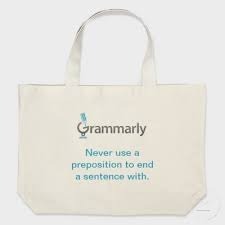 If you need extra help, proofreading programs like Grammarly can be useful. Grammarly is accurate, easy to use and best of all offers fascinating feedback. It gives detailed explanations of the grammar rule that has been broken, examples of correct and incorrect sentences, and offers corrections. Enlisting the help of other readers is also a good idea – a fresh perspective can work wonders, especially if your work has gone through several rewrites. Do whatever works for you, but never underestimate the vital importance of this final step.
If you need extra help, proofreading programs like Grammarly can be useful. Grammarly is accurate, easy to use and best of all offers fascinating feedback. It gives detailed explanations of the grammar rule that has been broken, examples of correct and incorrect sentences, and offers corrections. Enlisting the help of other readers is also a good idea – a fresh perspective can work wonders, especially if your work has gone through several rewrites. Do whatever works for you, but never underestimate the vital importance of this final step.





